Either/Or
Fragments of Copenhagen.
This post will be too long for email. Apologies. To see all the pictures (and bonus video) you’ll probably need to view them online or in the app.
I recently visited Copenhagen and took my Fuji GS645 camera with me. I have been reading Søren Kierkegaard’s Either/Or, partly because I am interested in existentialism and also in anticipation of the trip to the place he called home. On my various treks through the city, I imagined that I might be walking in Kierkegaard’s footsteps. Kierkegaard was famously fond of walking.
every day I walk myself into a state of well-being and walk away from every illness; I have walked myself into my best thoughts, and I know of no thought so burdensome that one cannot walk away from it ... Thus, if one just keeps on walking, everything will be all right.
Sometimes he walked with friends, engaging in passionate debate. Apparently, he was fond of pushing his interlocutors into shop fronts and even into the road in order to press home a philosophical argument.1 I managed to avoid this unsociable behaviour, although I did, as usual, make my wife wait for me on several occasions whilst I ruminated about a composition or the camera settings.
I began looking through the film scans yesterday and thinking about how to combine the images with small text extracts from Either/Or. As an older person, what interests me most about this book is the ‘dialogue’ between the aesthetic and the ethical, the presentation of two different ways of pursuing a meaningful life. I enjoy the dialogue between images (on the facing pages of a book), the dialectic of thesis - antithesis - synthesis, and the diptych format.2 I’m also fascinated by photopoetry.3
To cut a long story short, I used an online random number generator to find short texts from my copy of Either/Or.4 I then experimented with several double page layouts, combining images and texts. I really enjoy Mike Slack’s Walking in Place books, so I was partly influenced by him and by other photographers who walk through cities and combine pictures with words. For example, I’ve really enjoyed the recent experiments by
which have a strong graphic design.Here is my first attempt at a sequence of double page spreads for an imaginary zine.5 I don’t yet know whether this is working or will add up to anything meaningful. At this stage, I’m just playing with possibilities.
Scroll to the bottom of this post for a video version with ambient soundtrack!
I would be very interested in your thoughts.
These posts will always be free but, if you enjoy reading them, you can support my analogue photography habit by contributing to the film fund. Thanks to those of you who have already done so. All donations of whatever size are very gratefully received.
He also wrote to friends of imaginary walks with them.
The first number was for the page, the second for the line. Here’s the full list:
406, 13 - “the priest’s position”
188, 18 - “the more frightful her despair”
341, 34 - “your pure, deep being”
457, 6 - “clearly this situation is just as pitiable”
465, 38 - “the further back recollection goes”
125, 14 - “beyond the scope of the present”
240, 13 - “arbitrary interest of this kind”
447, 7 - “in stronger or weaker terms”
497, 6 - “witness to this terrible spectacle”
320, 26 - “its uneasy thoughts, its passion”
123, 29 - “the encounter has its importance”
218, 35 - “his hair is grey, his head bowed, his countenance downcast”
581, 36 - “the transfigured friend lives on in the other”
431, 7 - “Finally, as for the curse”
141, 7 - “these associations bear the stamp of contingency”
358, 2 - “even in this commotion”
261, 33 - “to go alone is risky. Watch out!”
469, 5 - “just as you have done”
47, 37 - “like a little child, I”
370, 19 - “an even sounder sleep”
358, 16 - “With respect to such emotions”
279, 9 - “Today I saw her for the first time”
47, 16 - “When I get up in the morning”
461, 34 - “This is how aesthetics transcends itself and reconciles itself with life”
114, 32 - “one soon begins to suspect the whole thing”
510, 32 - “that’s a distraction”
I plan to continue playing with this over the coming weeks (and months, probably).


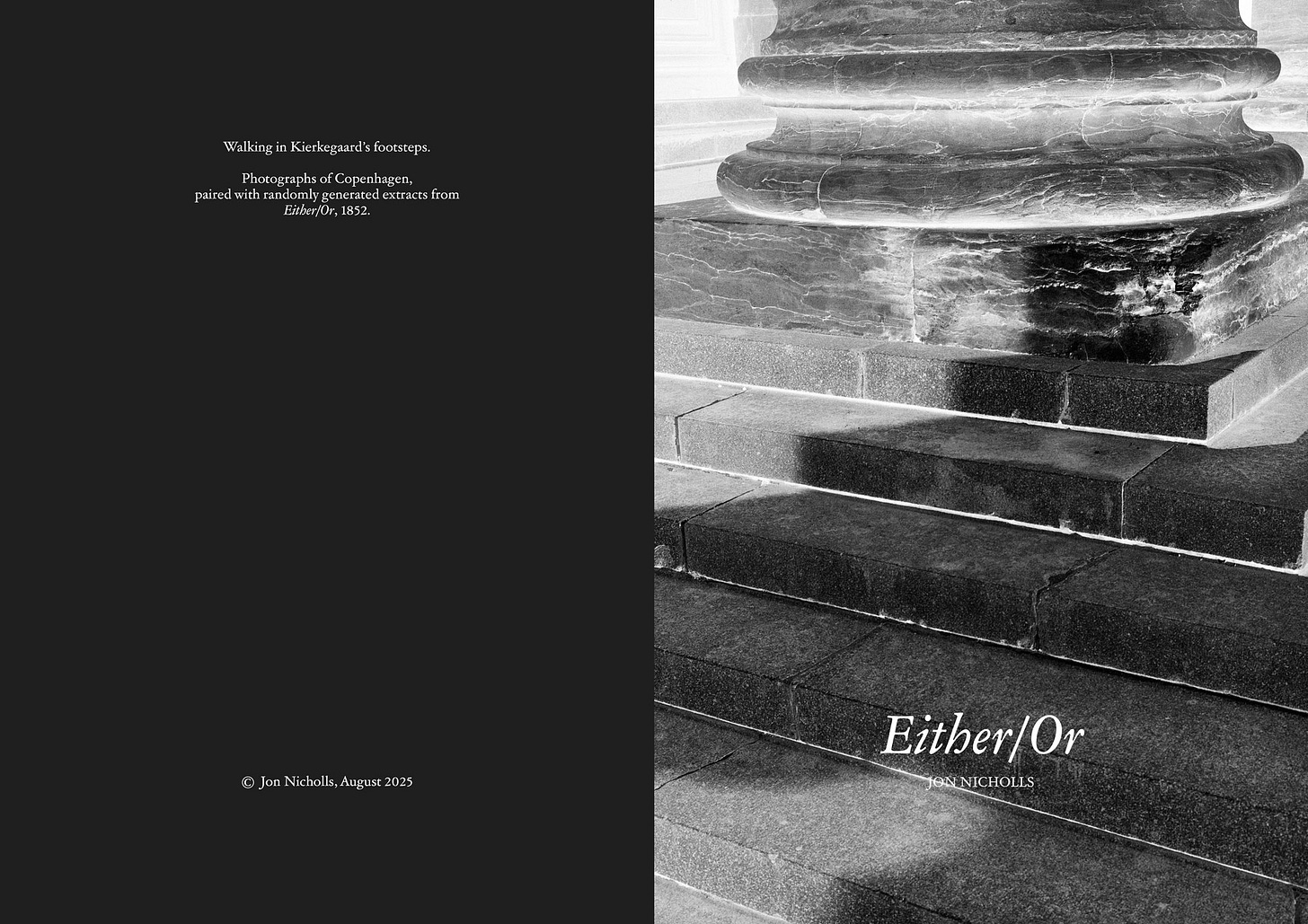
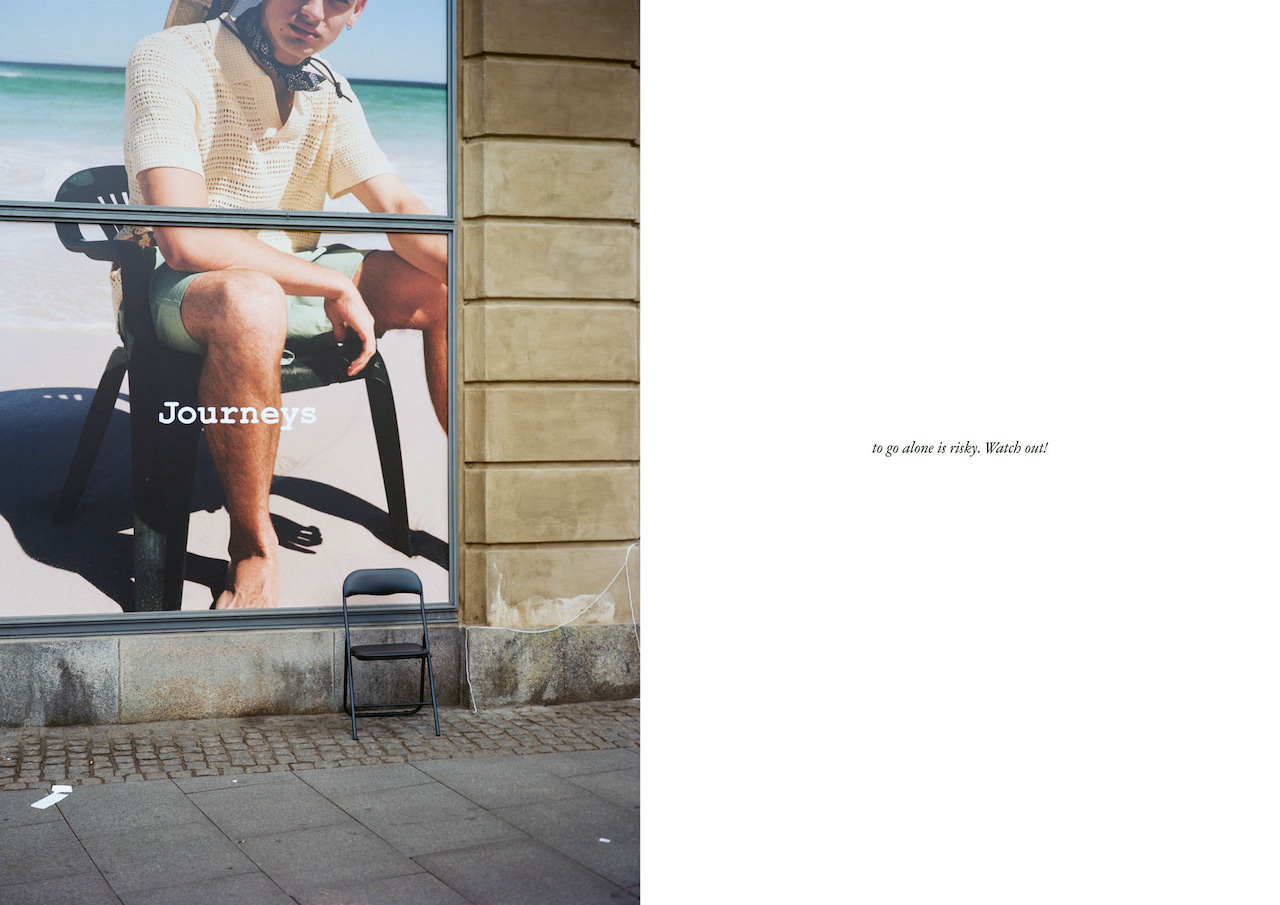
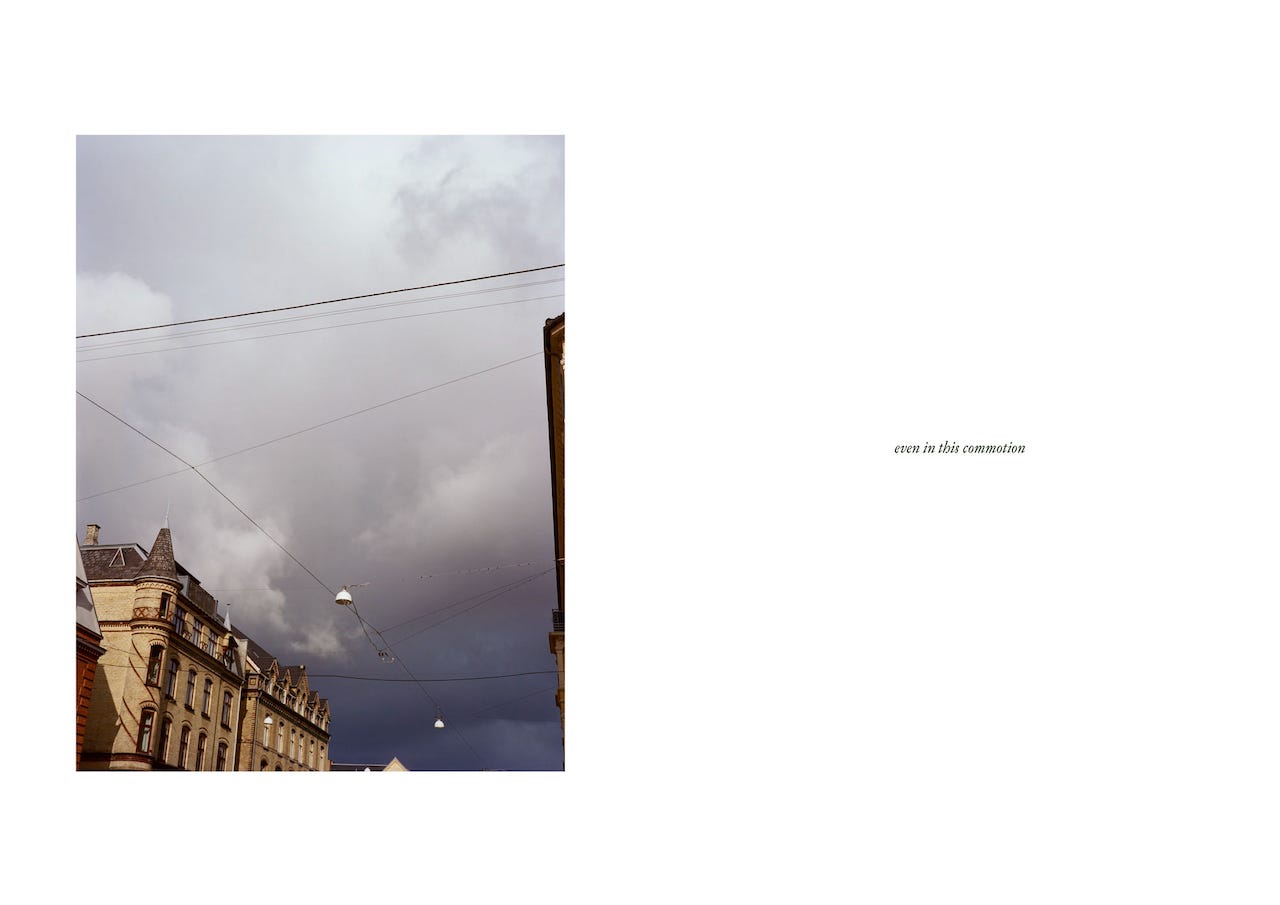
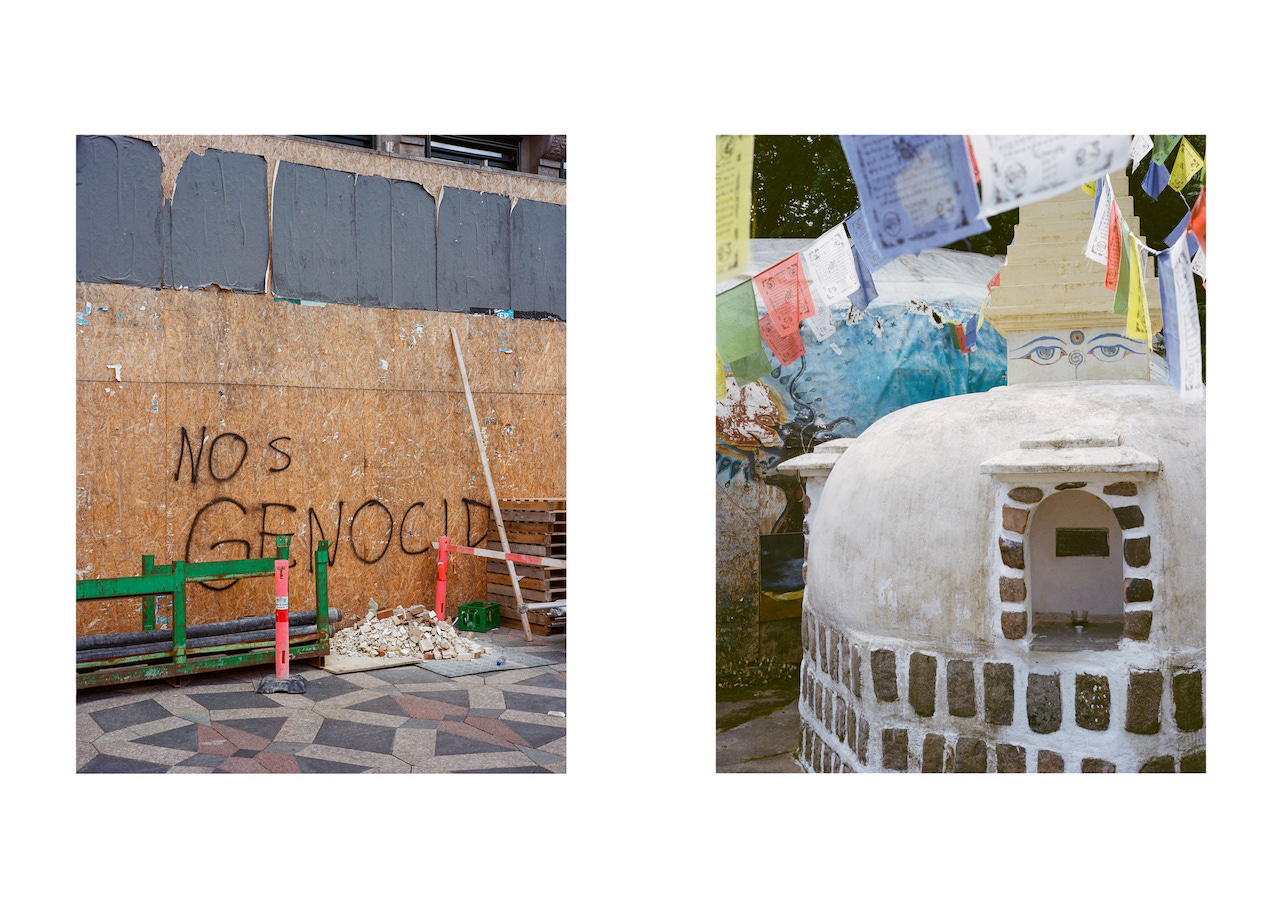
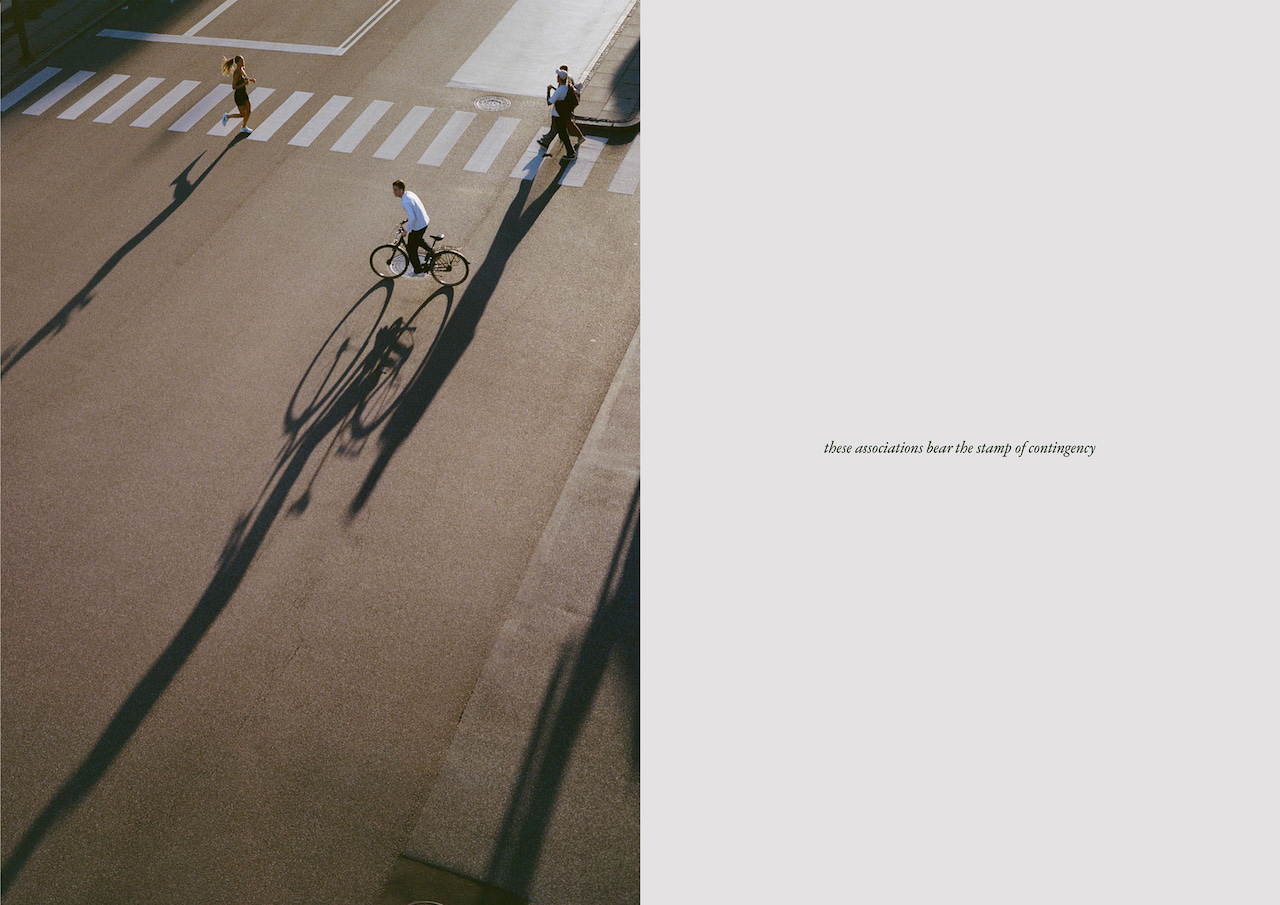
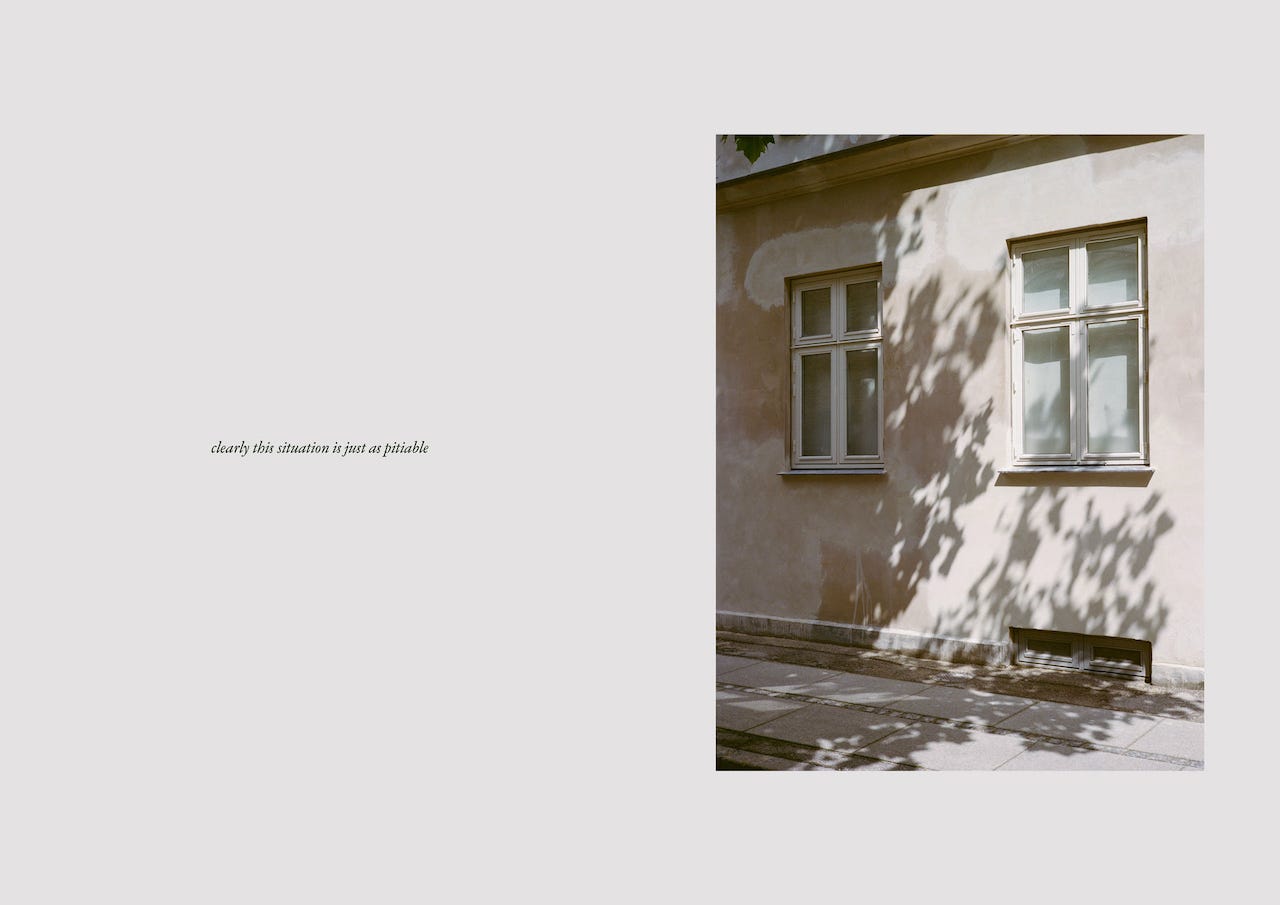
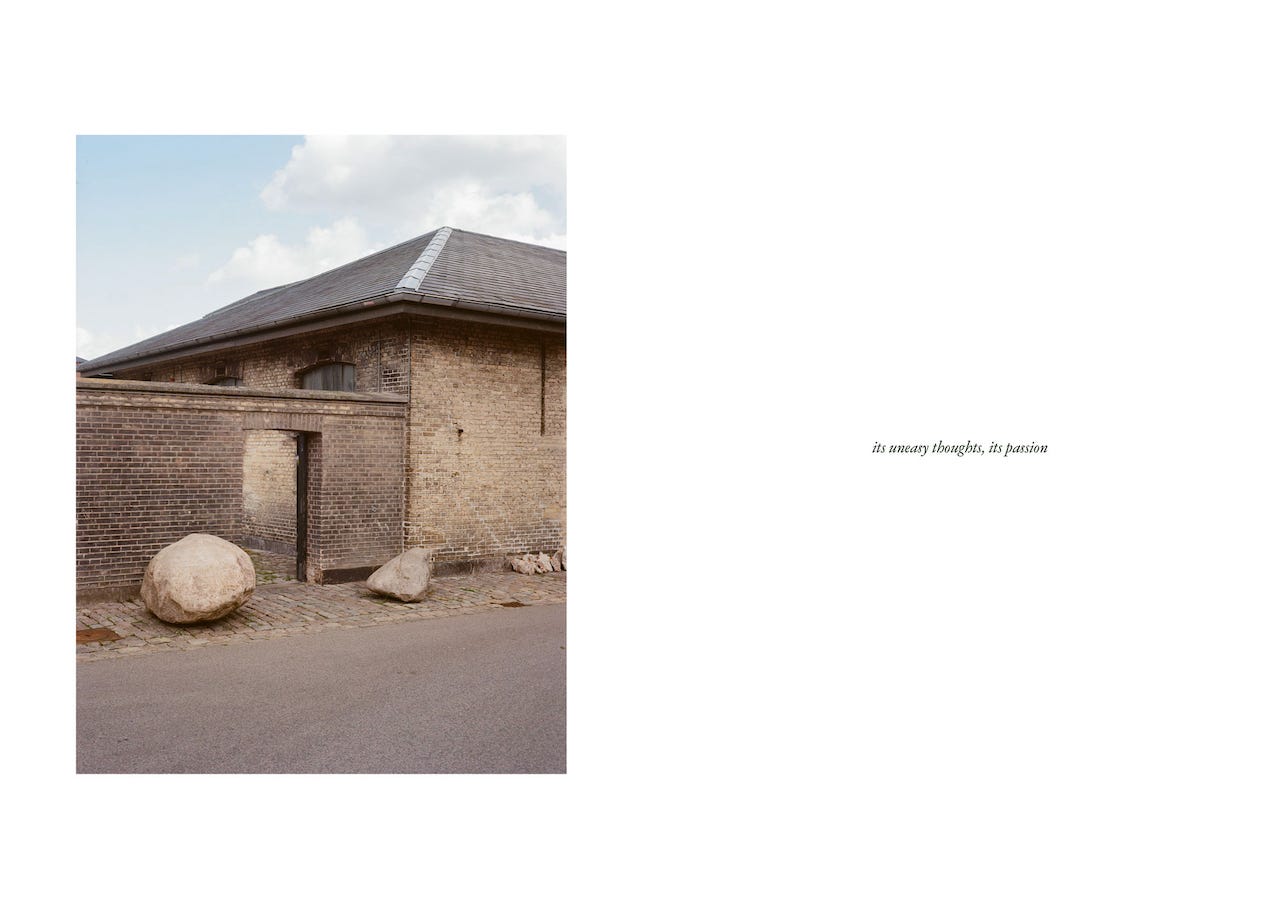
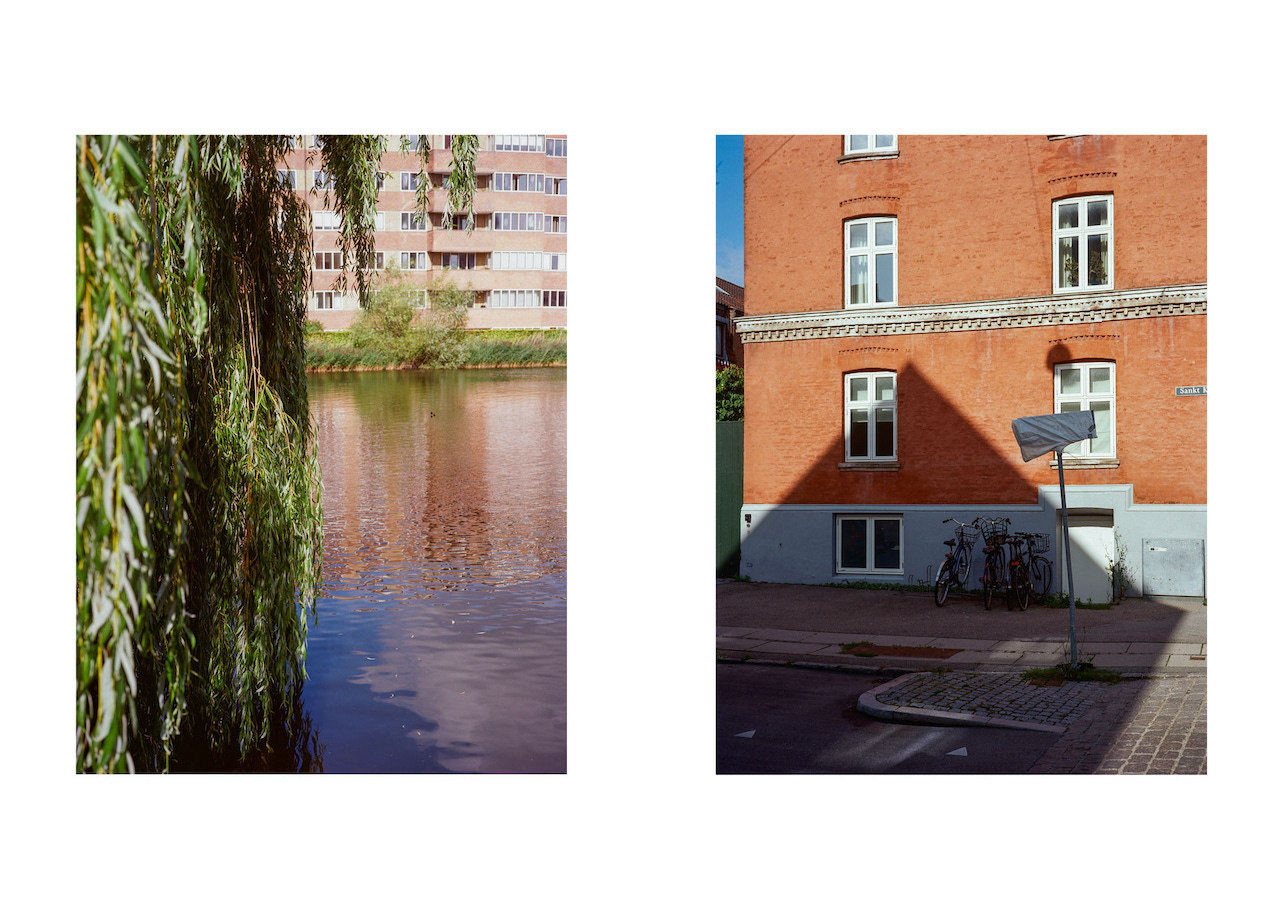


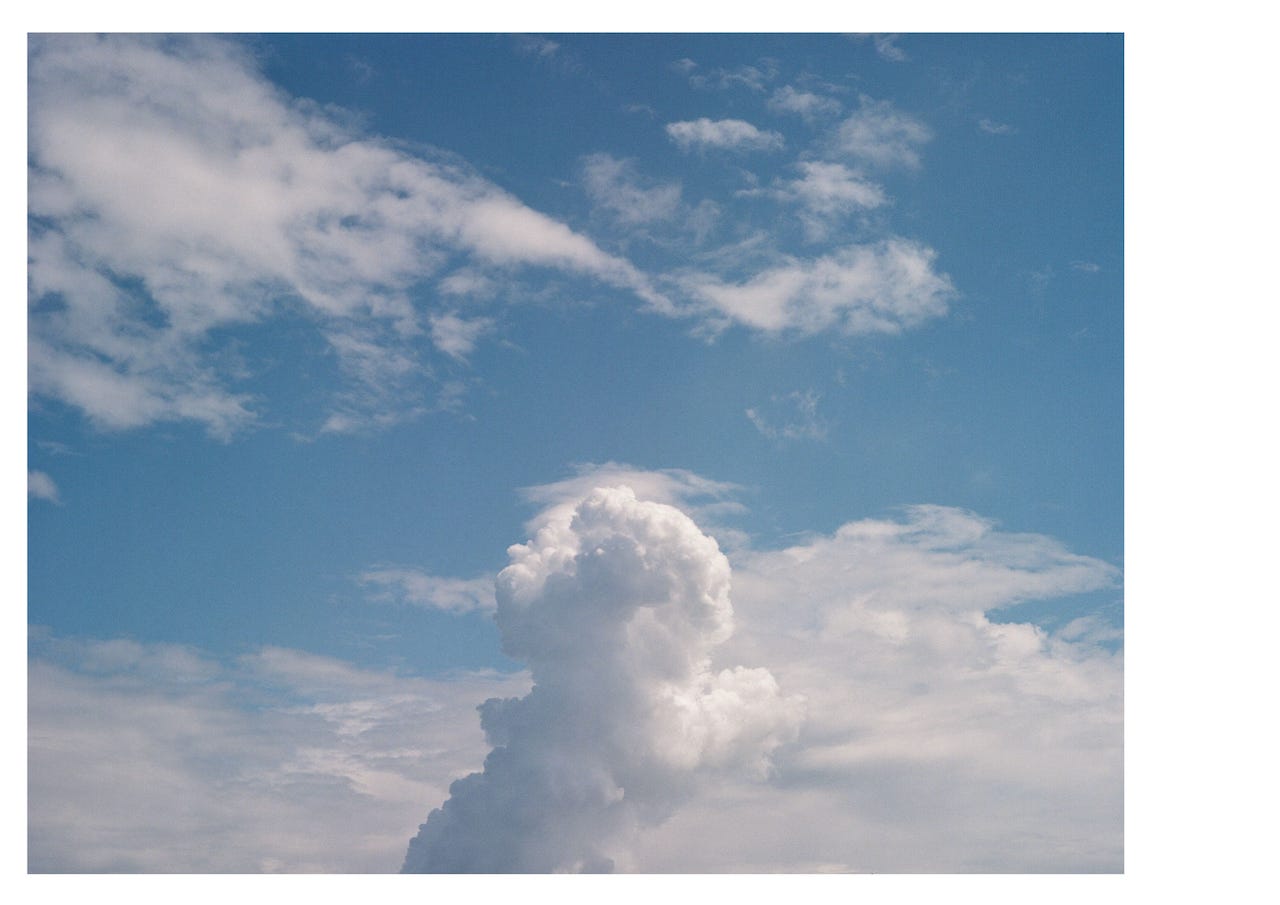
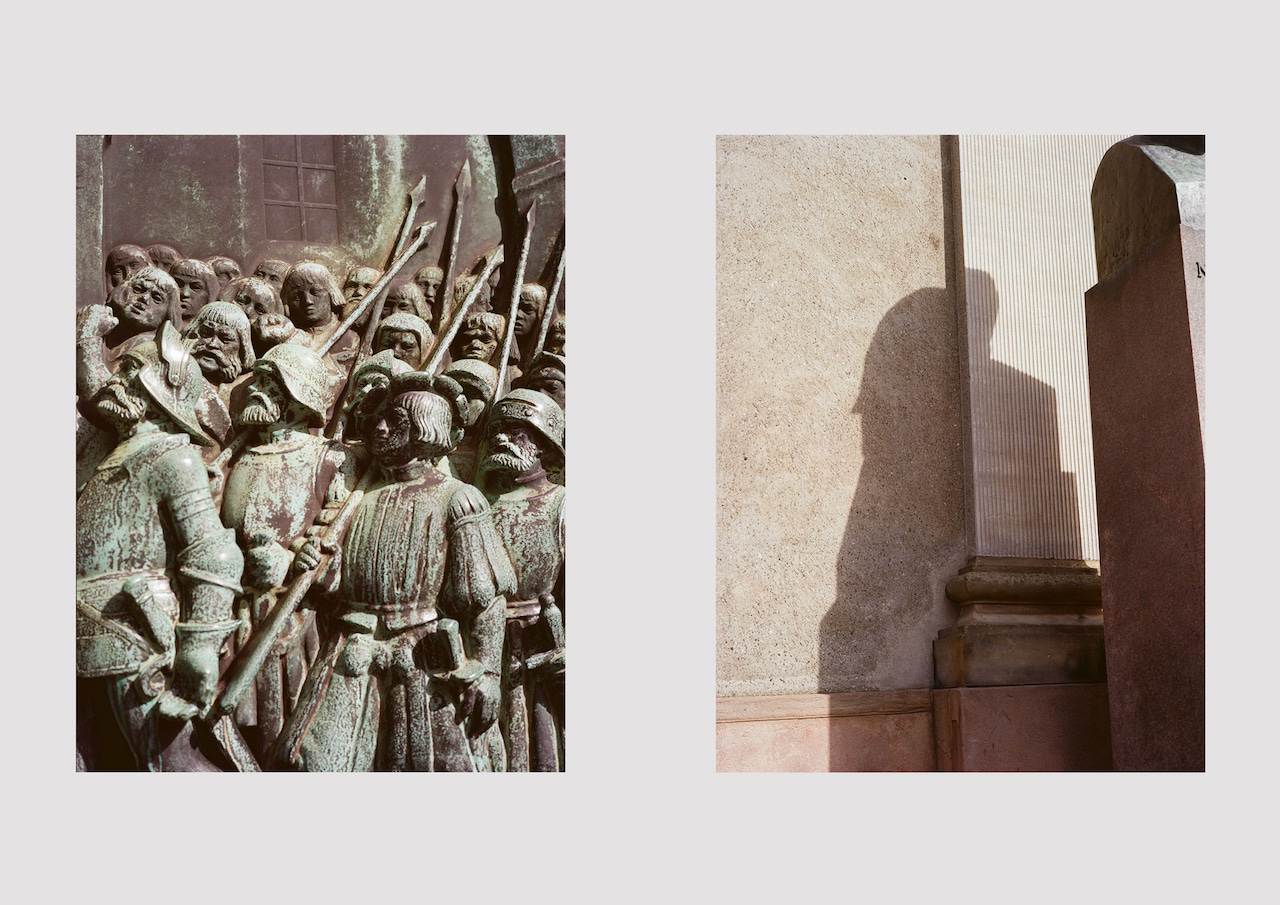
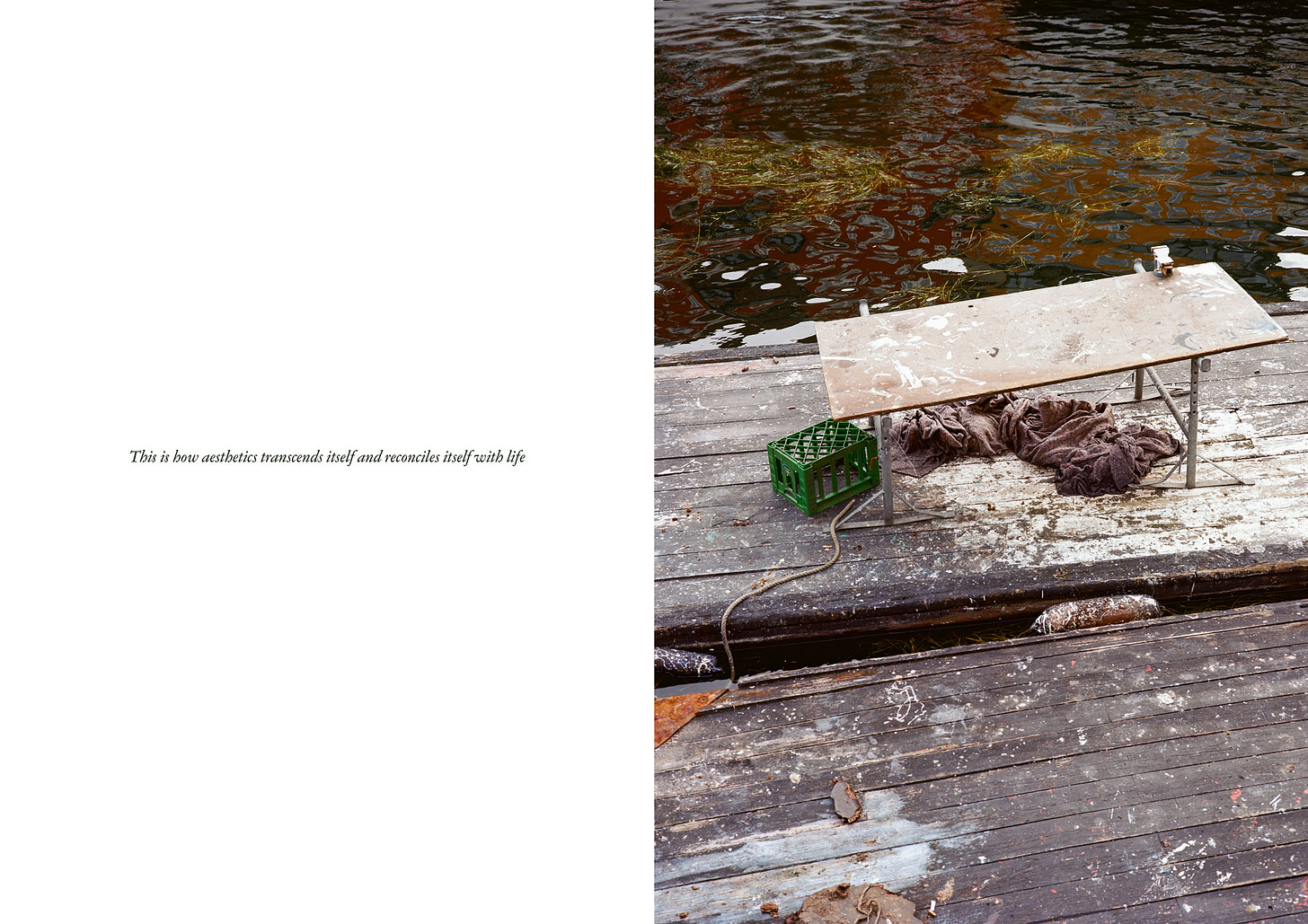
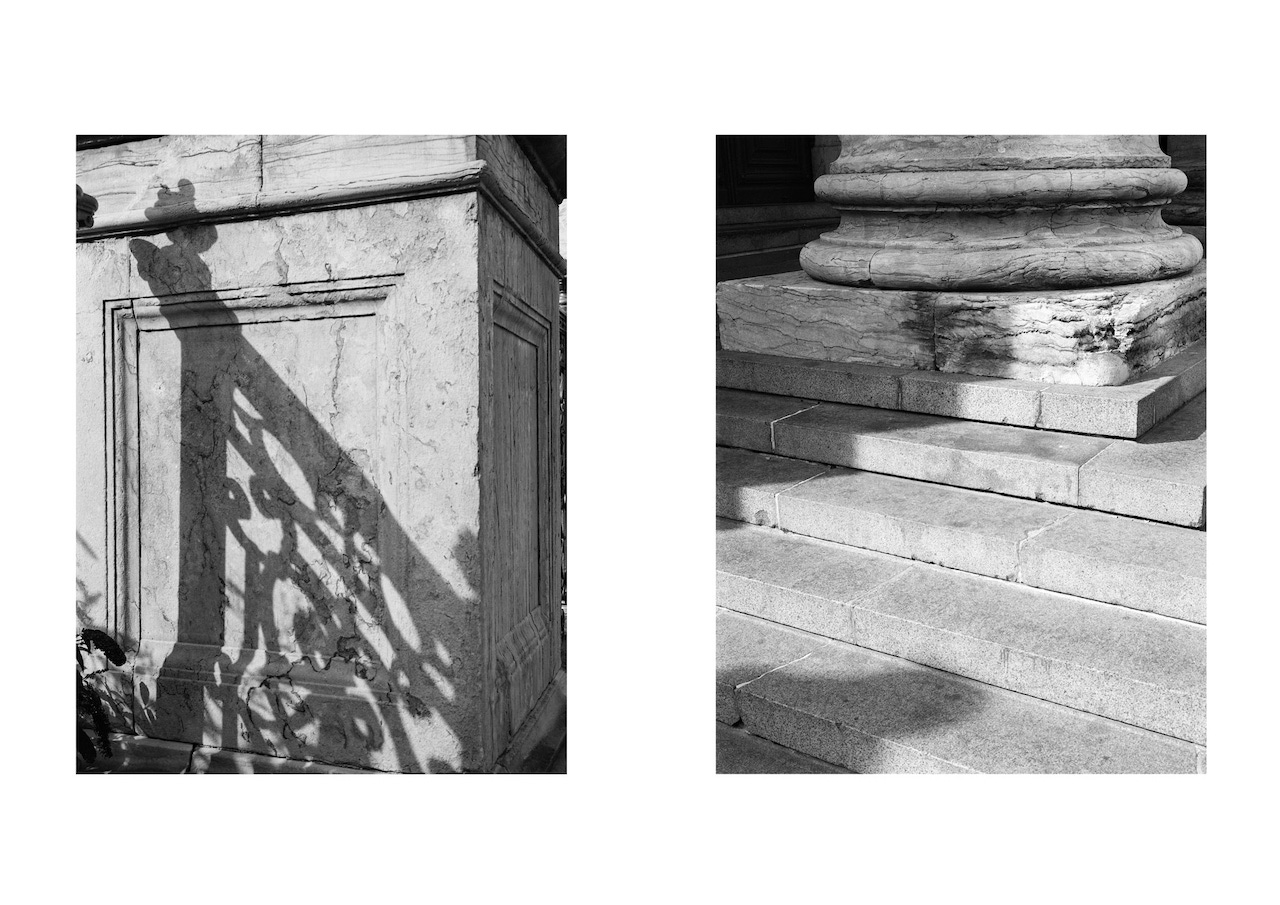
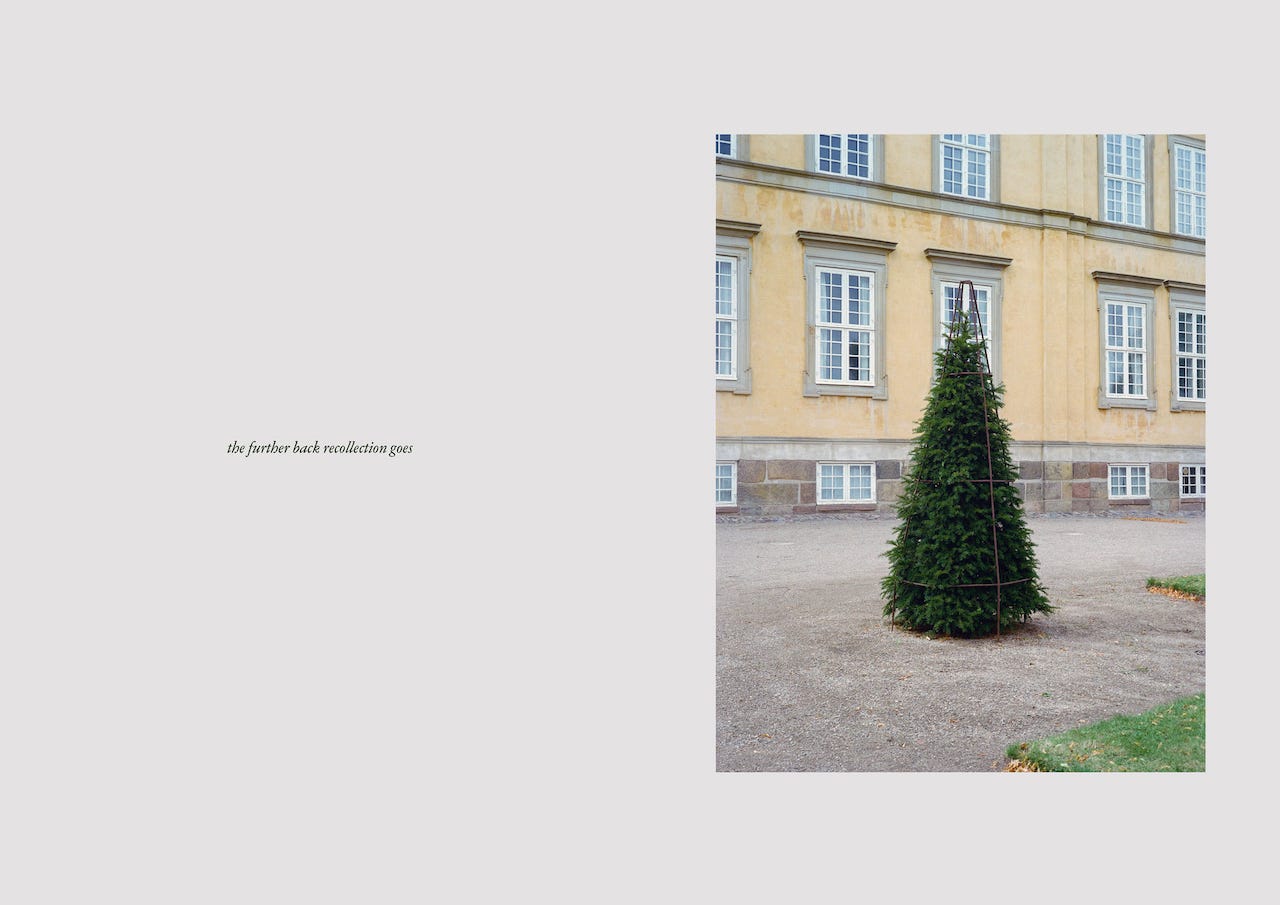
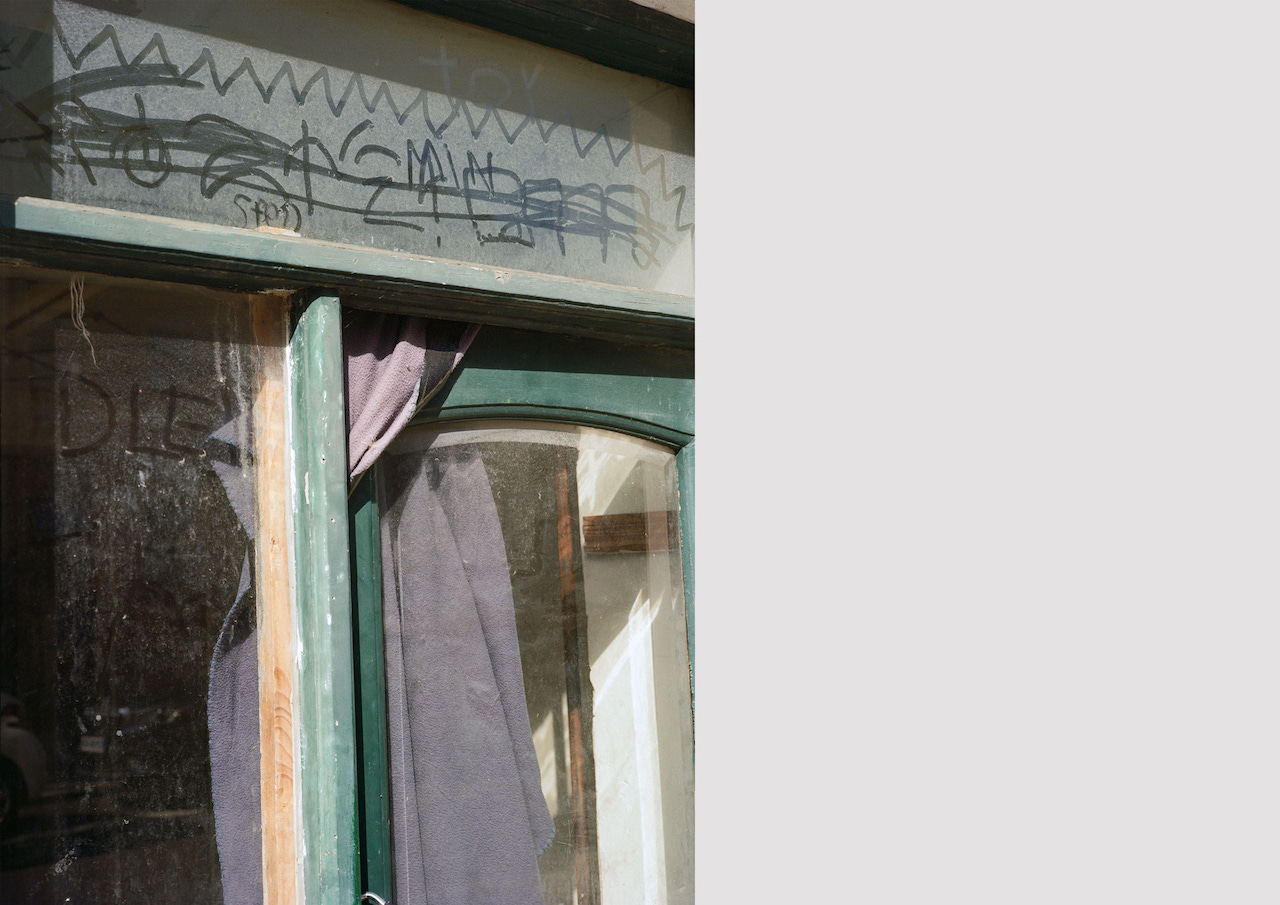

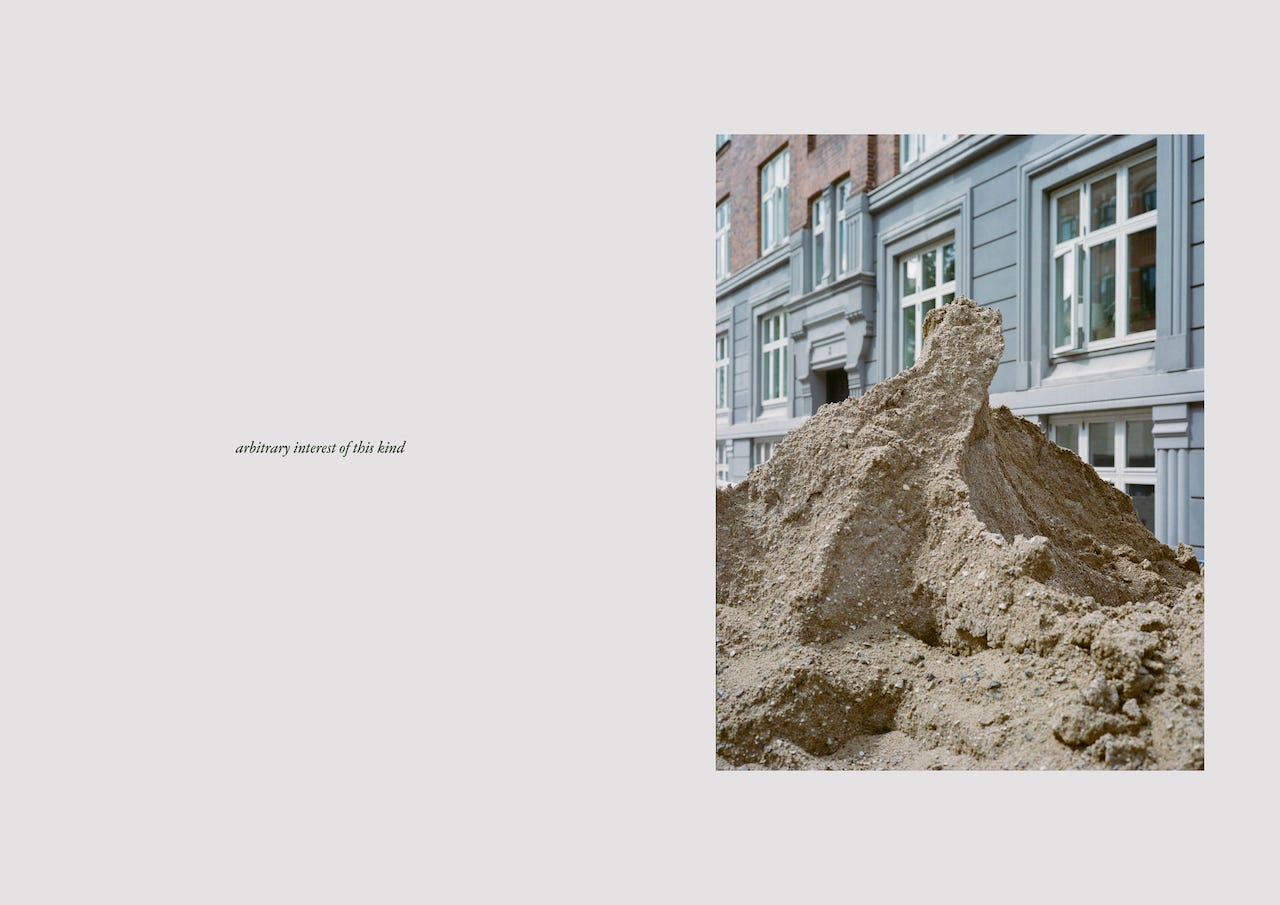
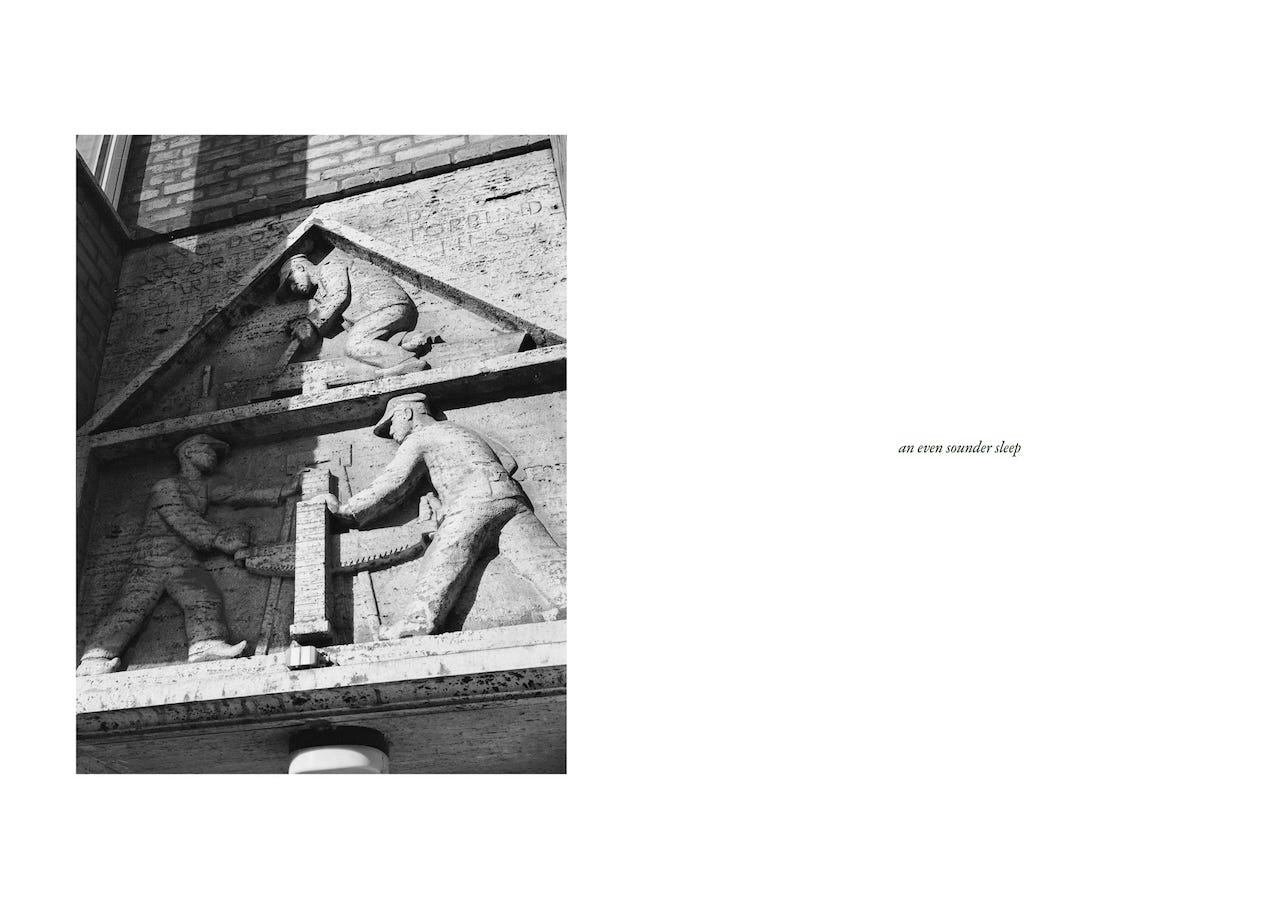
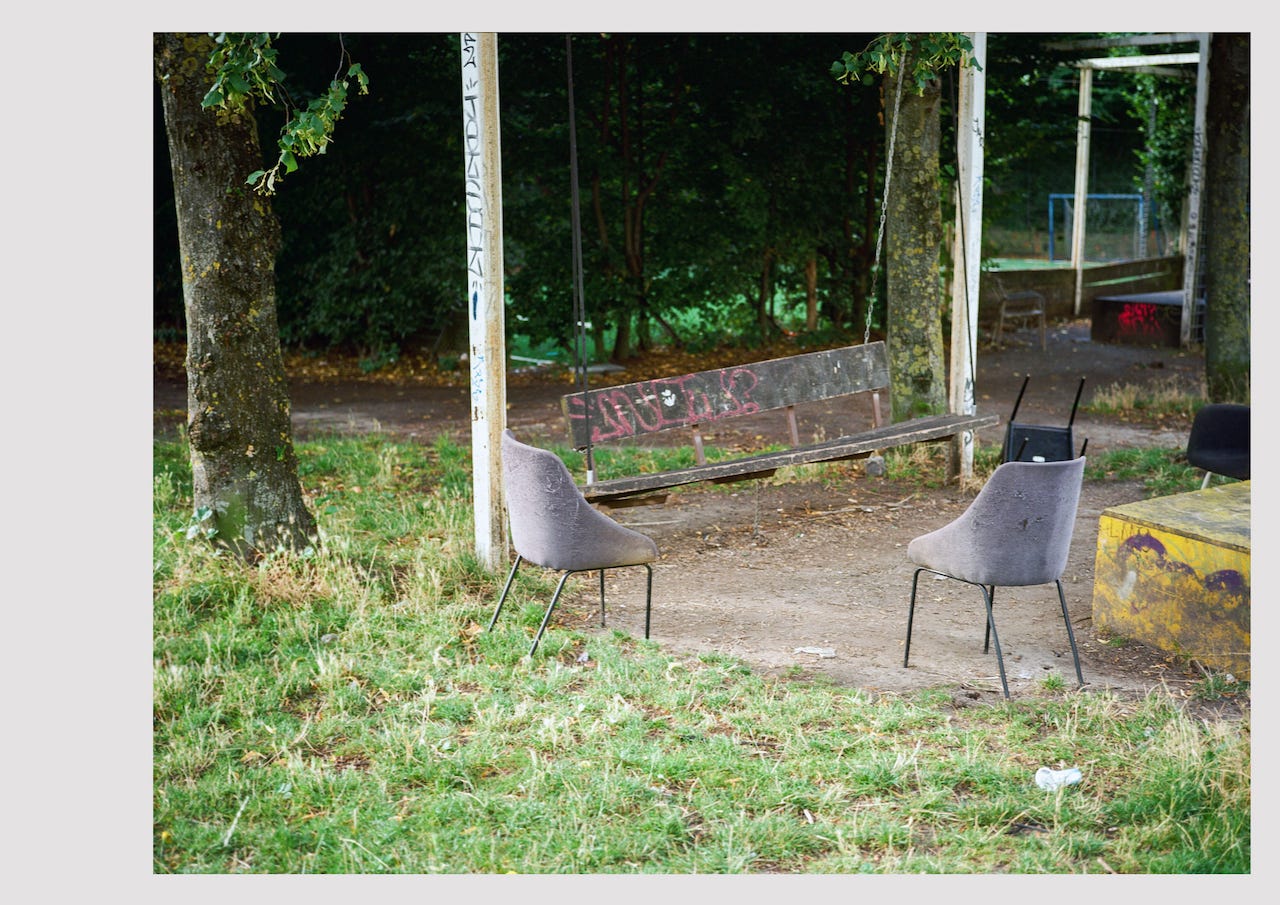

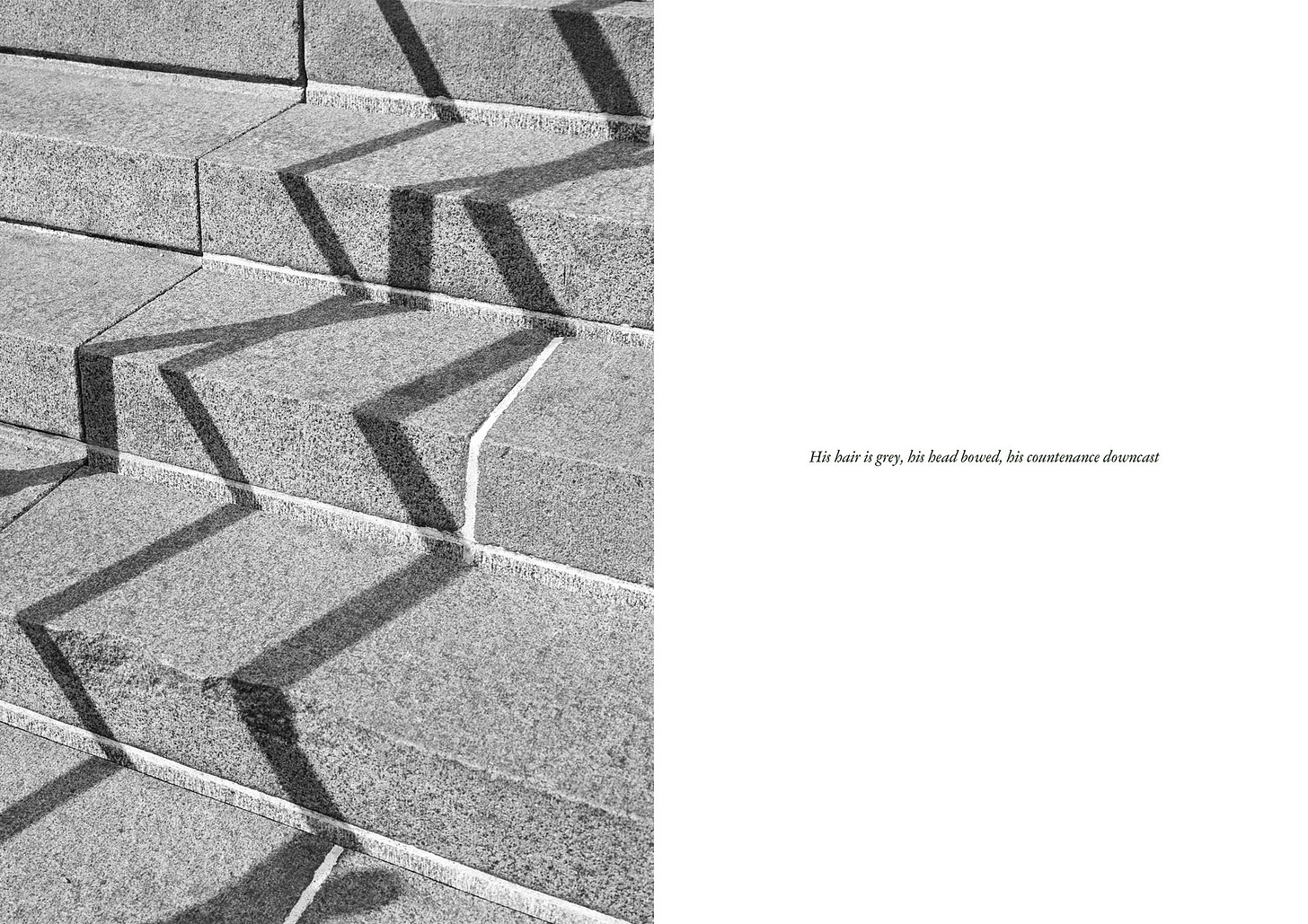
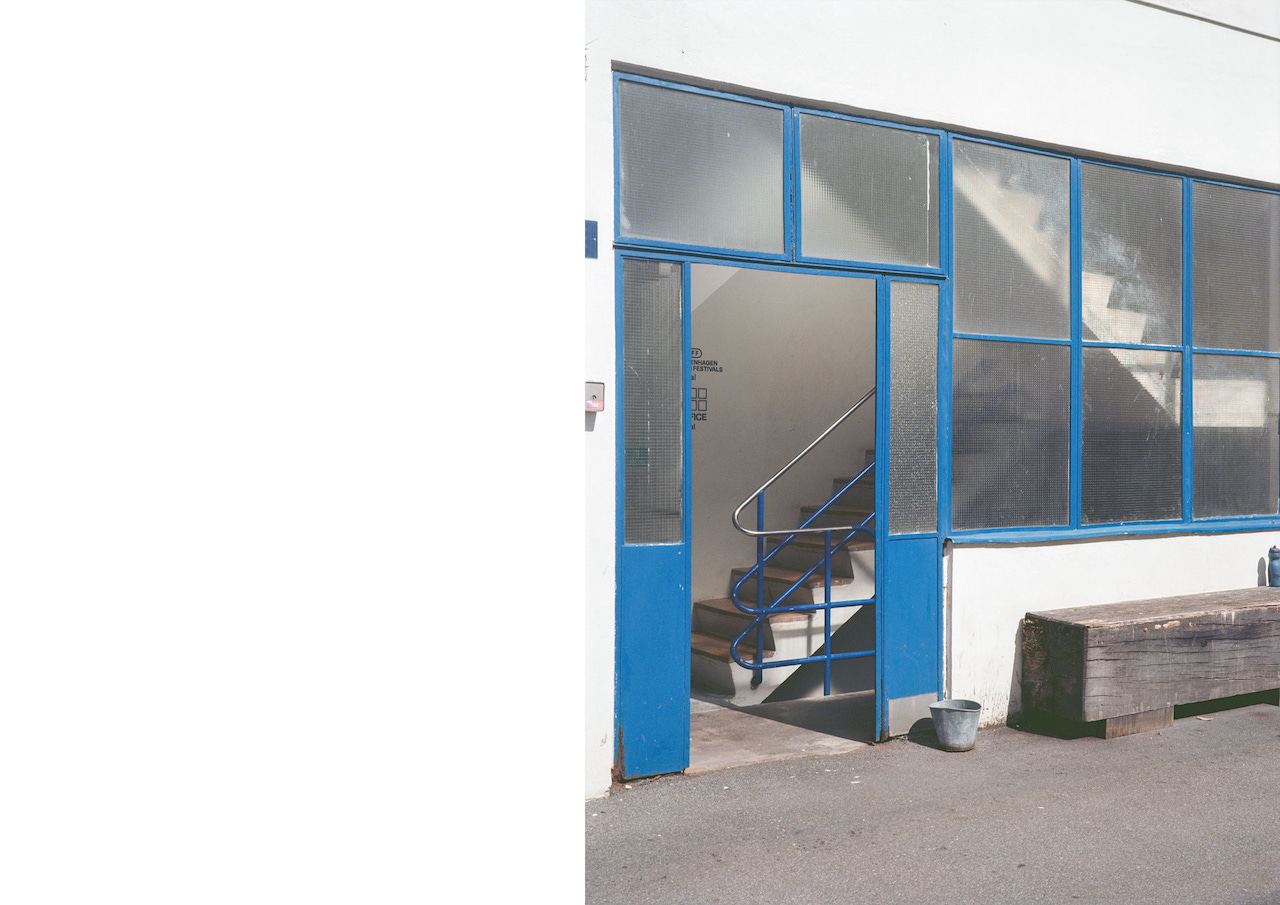

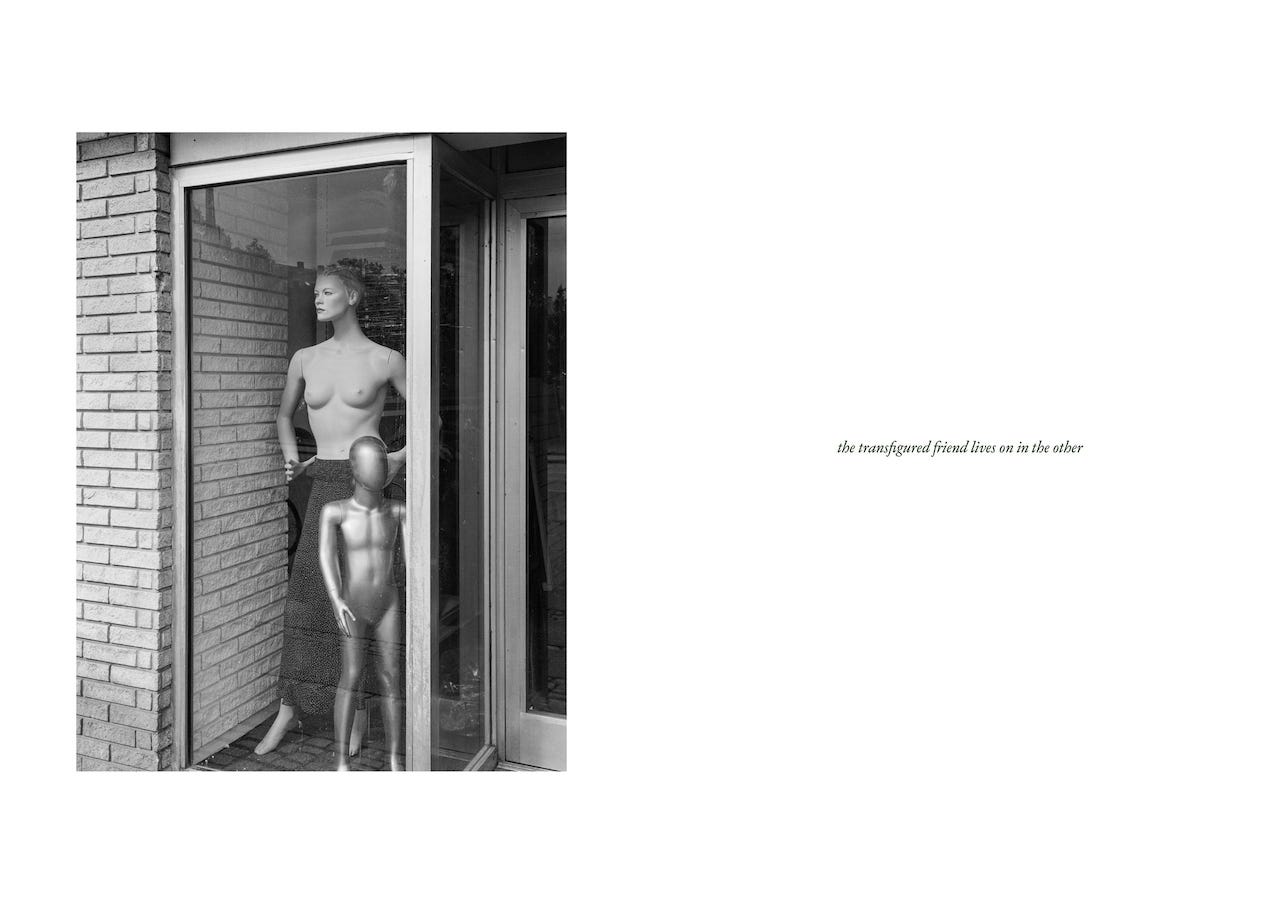



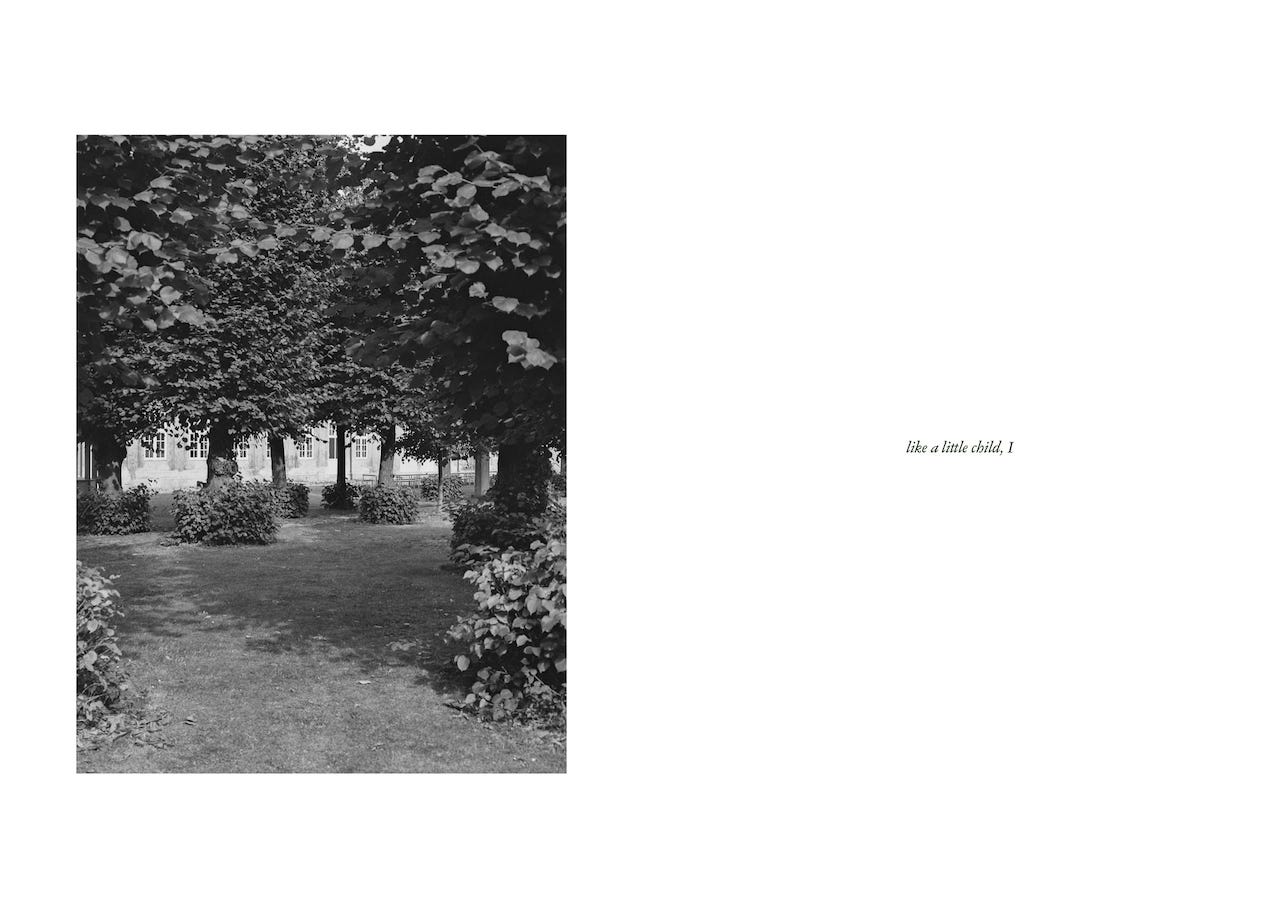

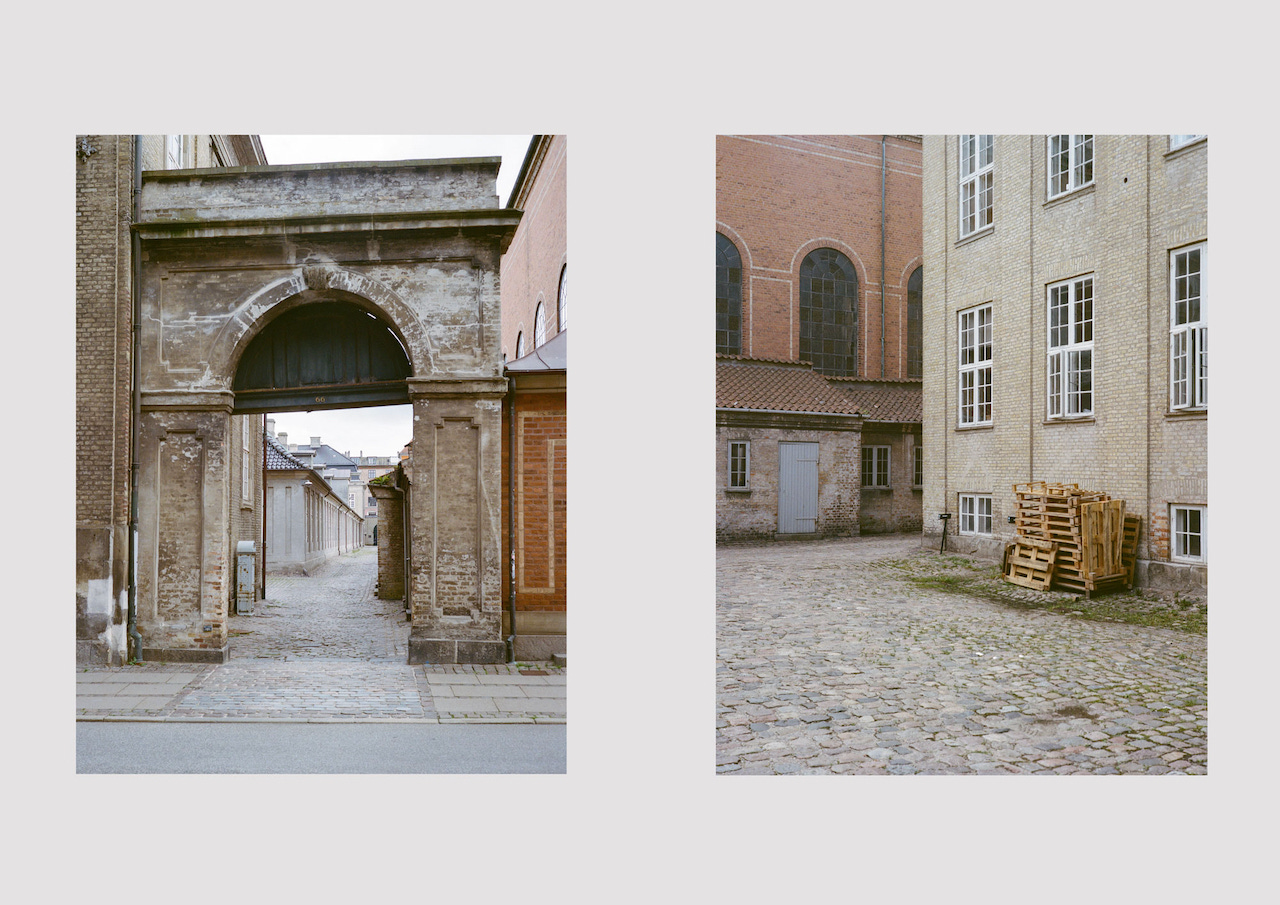
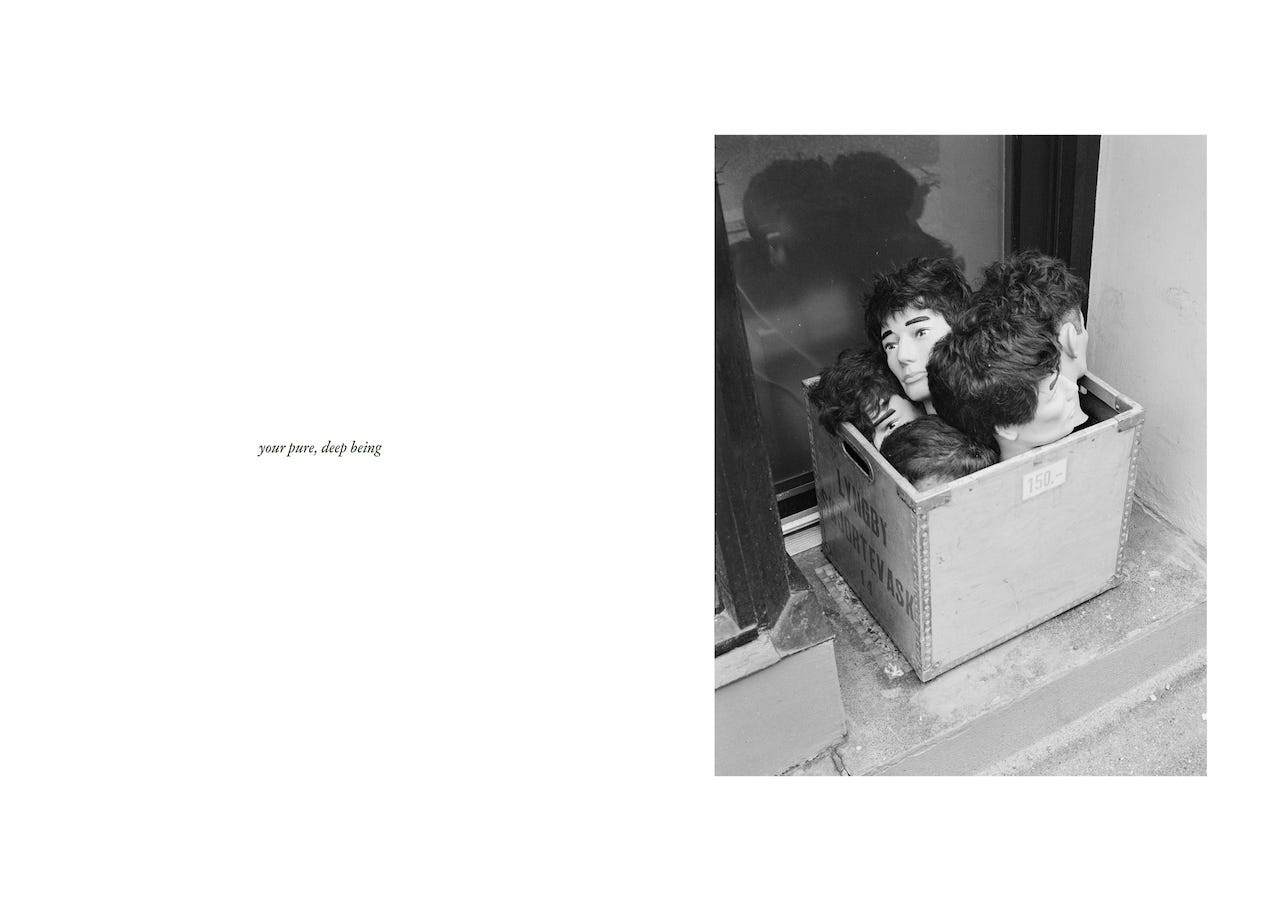
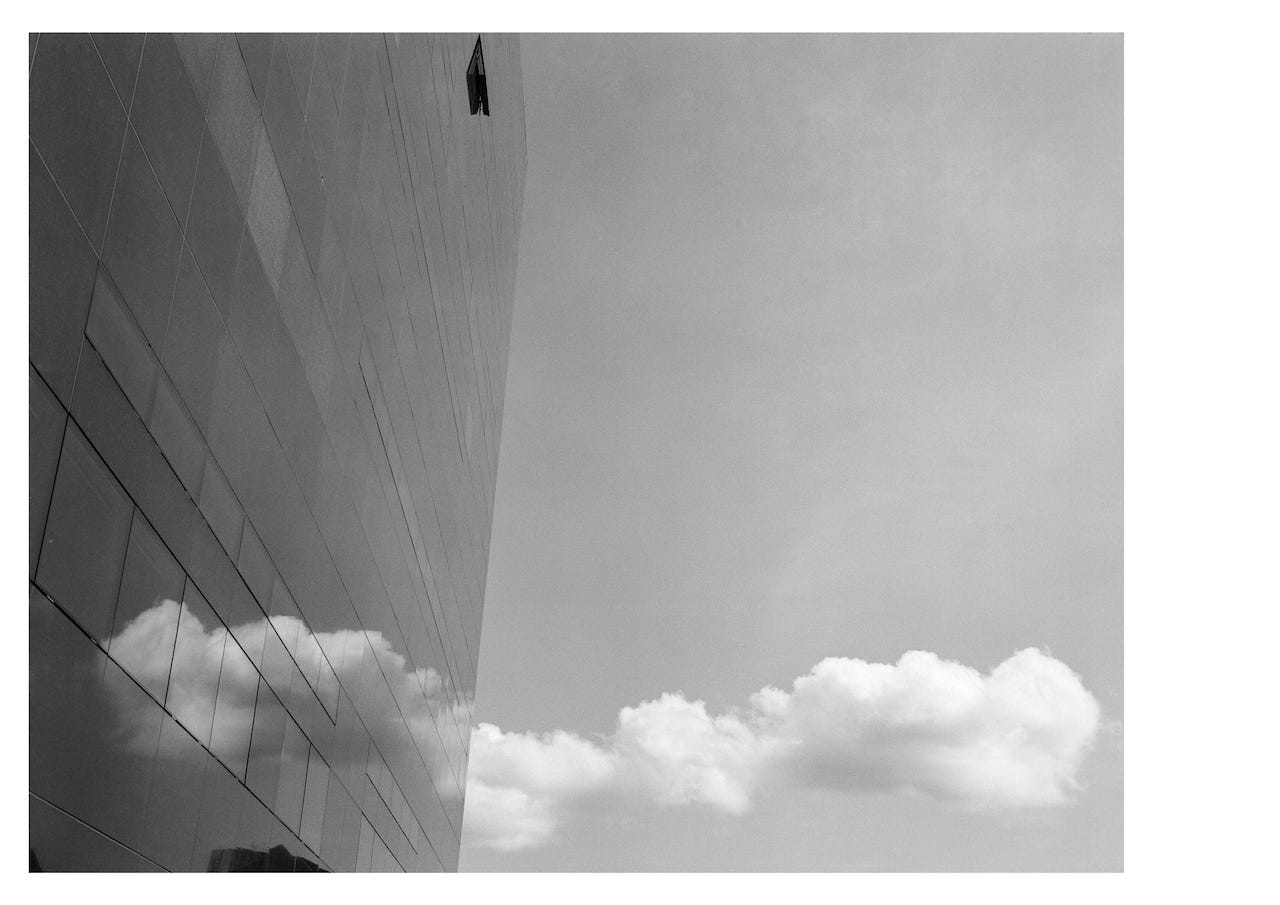

Hey Jon, I feel like you are off to a good start with this first sequence you are presenting here. A book that may be easy enough to find at the library, which I think you might enjoy if you haven't seen it already, is Teju Cole's "Blind Spot," a fantastic image and text book. That said, there is another photographer who works with image and text, whom I recently attended one of his webinars, and that is Alan Huck. In the Q&A portion of the lecture, the group got into discussing the length of text versus the length of images. I noticed in your video form of this sequence that you lingered on the double page spread of two images for double the amount of time that you stayed on the text and image pairings, where I would like to observe that my first reaction to going through the sequence was that the double page spreads of images were clever fillins time wise to the same length of reading to the text and image pairings as the text take no longer than the image to read, and were very effective of breaking up that sense of perceived reading time from text and image to image and image.
Additionally, the larger the image is, the more time we naturally spend with it, as our eyes move over it more slowly than with a smaller image, which we absorb more quickly. Likewise when you break the rhythm to place a solitary image next to a blank space, the blank space ruptures our expectations just as the double page images, or the full bleed large images do, and causes up to stay longer with the image as we search to understand why this photo was isolated in layout in which expect to find text, but has none. All these points I am bringing up are to highlight the potential you have to manipulate the perceived time in your sequence, and to be conscious of where you implement these rhythmic changes and breaks so that they coalesce with the narrative of the sequencing. When we use words in conjunction with images, we are even more prone to narrative structure building as viewers. Therefore, being aware of how all these elements interact with the text and where that text may lead a narrative is something to consider as you further explore this sequence. The random number generator did you some great favours, the text it and you chose pair well with the images you chose to sit them next to, some read each other.
In contrast, others are more ambiguous and charge the image with an unknown feeling, so the combination of the text reading into the images, while in other cases charging the image with an unpresent emotions is highly effective here. I also greatly appreciated the photos that contained vernacular text from advertising, graffiti, and signage. And so on, and how you let some act as stand-ins for texts or pair them with texts, giving the vernacular a jolt of excitement.
I thoroughly enjoyed reviewing this sequence, and I was unfamiliar with Kierkegaard before your post, so thank you for the introduction. Keep pushing this idea, I genuinely feel you have something substantial here.
Matt.
I really appreciate how you’re able to intersperse randomness into your creativity, eg with the random number generator. It’s a very different way of seeing